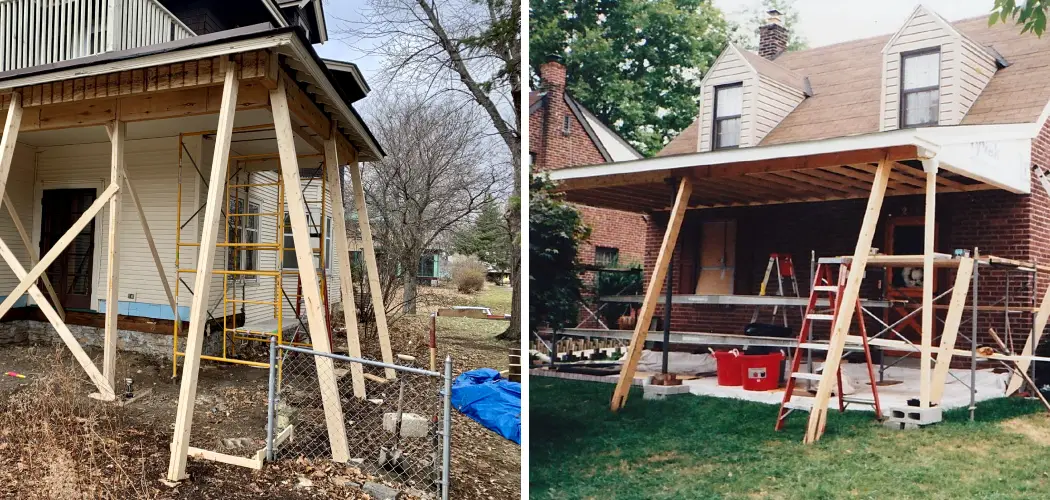A sagging porch roof can be a serious issue for homeowners, leading to water damage and other structural problems. Not only does it make your porch look unsightly, but it also puts you at risk of more costly home repairs in the future if not addressed immediately.
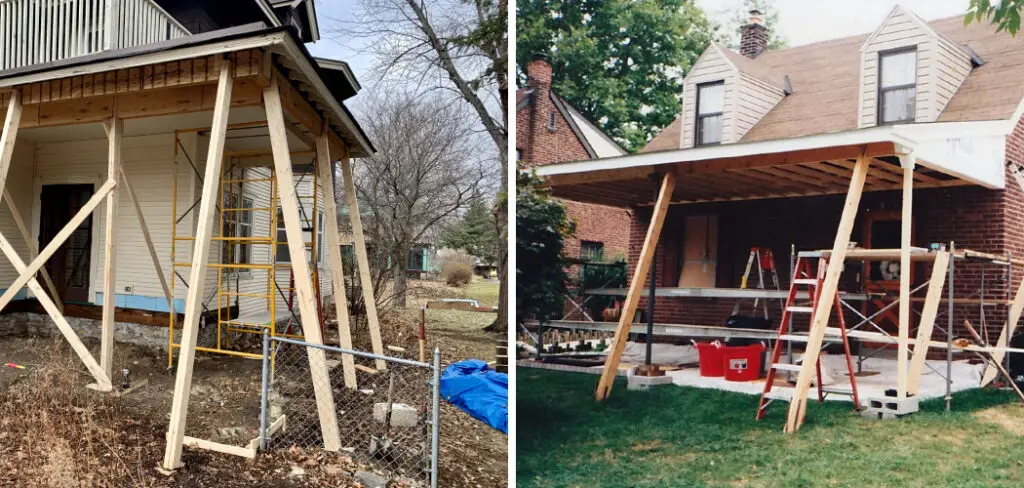
Fortunately, fixing a sagging porch roof can be easier than you think—all it takes is some carpentry skills and the right tools. In this blog post, we’ll walk through step-by-step instructions on how to fix a sagging porch roof so that you don’t have to worry about costly damages down the road!
Can You Fix a Sagging Porch Roof?
Homeowners must take extra care when considering repairing or replacing their porch roof, as a sagging roof can indicate more serious underlying structural problems.
Consulting a professional builder or contractor is recommended to assess the situation and determine if the fix requires extra support beams or pillars – in many cases, an unsupported railing system can lead to damage and displacement of deck boards.
For those confident in their DIY abilities, however, there are some steps you can take to help get your porch roof back into shape, like checking the integrity of joists and rafters and examining fastener connections.
With a little effort, persistence, and patience, you can have your porch roof looking (and feeling) better than ever against both sun and rain!
Why Should You Fix a Sagging Porch Roof?
A sagging porch roof can cause serious problems by creating an unsafe environment for your family and friends. Not only does a sagging roof make it difficult to access, but the constant weight shifts can damage the porch structure and the rest of your home’s architecture.
Fixing a sagging roof is an important task that should be done regularly to prevent any sort of mistreatment of your property and to ensure the safety of those who use it. Regular maintenance also helps maintain a visually appealing property, as a sagging roof is one sure way to decrease your home’s aesthetic appeal.
7 Steps to Follow on How to Fix a Sagging Porch Roof
Step 1: Assess the Situation
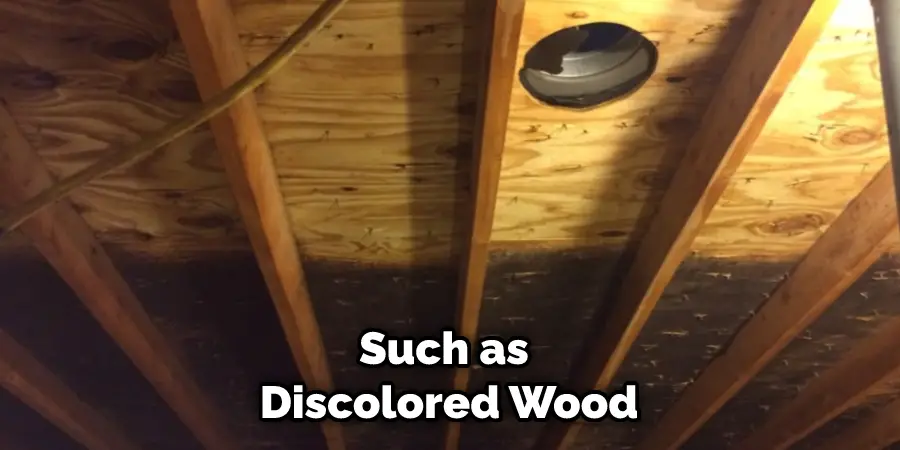
Before beginning any repairs, you need to assess the situation. Look for signs of rot or water damage, such as discolored wood or mold growth. You should also look for bowing rafters or cracks in the concrete footings that support your porch roof. If you notice any of these issues, it’s best to contact a professional before attempting any repairs yourself.
Step 2: Replace Damaged Wood
If you’ve identified any damaged wood along your porch roof’s frame or rafters, use a circular saw to cut out the affected area and replace it with new wood. Make sure that the new piece fits snugly into place and is secured with screws or nails.
Step 3: Reinforce Your Porch Roof Frame
Once all damaged pieces have been replaced, you’ll want to reinforce your porch roof frame by adding additional support beams where necessary. To do this, measure where each beam will go and cut them accordingly with a circular saw. Next, secure each beam into place using screws or nails before finishing off with caulk around the edges.
Step 4: Check Your Concrete Footings
It’s important to check the condition of your concrete footings every few years to ensure they are still in good shape and properly supporting your porch roof frame.
If there are any cracks or other signs of wear and tear, use a concrete patching compound to fill them in and ensure that your porch roof is adequately supported over time.
Step 5: Add Additional Support Beams
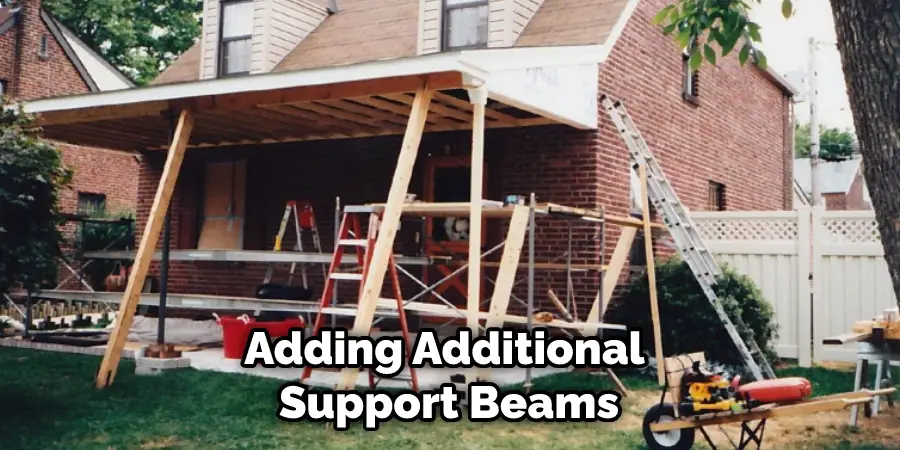
If your porch roof is sagging in certain areas, consider adding additional support beams to help keep it from further drooping. Use a level and measuring tape to determine where you need extra support before cutting the appropriate-sized beams with a circular saw and securing them into place with screws or nails.
Step 6: Add Brace Posts
If your porch roof is still sagging despite having added additional support beams, you may need to add extra brace posts for greater stability. First, measure how tall each post should be and then cut them accordingly with a circular saw before securing them with concrete screws.
Step 7: Add a Roof Jack
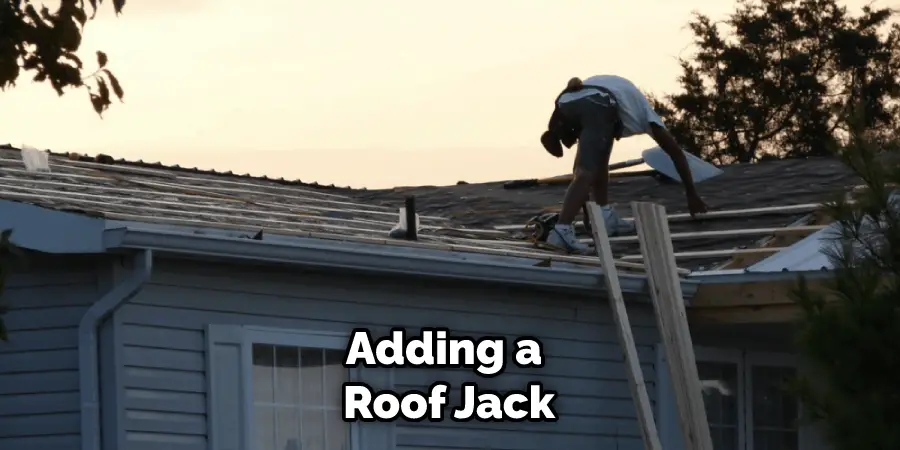
Consider adding a roof jack to your porch roof for extra support and stability. Measure the width of your rafter and then cut out a piece of 2×6 lumber to fit over it. Secure it into place with nails and use shingles or other roofing materials to cover up the jack for added protection from the elements.
That’s it! You’ve now learned how to fix a sagging porch roof. With the right tools and materials, you can ensure your porch roof stays strong and secure for years to come. Good luck!
Things You Need to Know Before Fixing a Sagging Porch Roof
Fixing a sagging porch roof requires some basic tools and materials, as well as an understanding of the basics of roof repair. Before getting started, it’s important to determine what kind of roof you’re dealing with and familiarize yourself with the components needed for repair.
This includes knowing the shape of your roof, the recommended materials for repairs, and any local codes that must be followed when making repairs. Additionally, it can be helpful to learn how to access your attic space or crawl space to assess any structural damage beneath the porch roof.
Taking these steps will help ensure you can safely and correctly fix your sagging porch roof.
Benefits of Fixing a Sagging Porch Roof
No one wants their porch roof to look like it is not taken care of. Not only does sagging ruin the aesthetic of your house, but it can also cause damage to your home and make it more susceptible to rain, snow, and other weather patterns that may be possible in your area.
Fixing a sagging porch roof can save you time and money in the long run. By ensuring there are no gaping holes or weak spots on the roof, you can prevent the influx of water, which could lead to mold issues or water damage.
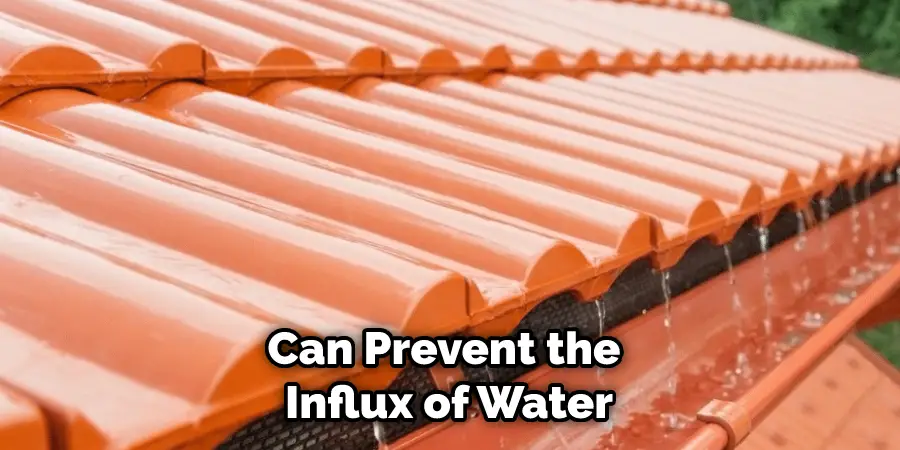
A sound porch roof will also ensure that any items stored underneath stay safe and dry during inclement weather conditions. In addition, keeping up with basic maintenance, such as fixing sagging spots or leaks, will go a long way toward protecting your home from costly repair bills down the road.
6 Common Mistakes People Make When Trying to Fixing a Sagging Porch Roof
1. Not Repairing the Roof Before It’s Too Late
One of the most common mistakes people make when it comes to fixing a sagging porch roof is waiting until the damage is too severe. Unfortunately, by the time they realize there’s a problem, the roof may have already begun to collapse. If you think there may be an issue with your roof, it’s important to have it inspected by a professional as soon as possible.
2. Not Replacing Rotted Wood
Another common mistake people make is failing to replace rotted wood. When wood becomes rotted, it loses its strength and can no longer support the roof’s weight. As a result, the roof will begin to sag. If you don’t replace the rotted wood, the problem will only get worse and could eventually lead to a collapse.
3. Not Adding Support
If your porch roof is sagging, it’s likely because it doesn’t have enough support. Porch roofs are typically supported by posts or beams that run along the roof’s perimeter. If these posts or beams are not properly installed or are not strong enough, they will not be able to support the weight of the roof, and it will begin to sag.
4. Not Securing Loose Shingles
Loose or missing shingles can also cause a porch roof to sag. When shingles become loose, they can no longer provide a tight seal against the elements.
This can allow water to seep underneath and cause rot and deterioration of the wood supporting the roof. In addition, missing shingles leave gaps that can allow heat or cold air to enter, further damaging the structure.
5. Not Checking for Leaks
Leaks are another common problem that can cause a porch roof to sag. Water leaks into your home through the roof can weaken the structure and cause it to sag over time. It’s important to have any leaks repaired as soon as possible to prevent further damage.
6. Not Maintaining Gutters
Gutters play an important role in protecting your home from water damage. They help to collect rainwater and direct it away from your home so that it doesn’t seep into cracks and cause problems like mold or mildew growth.
If your gutters are not properly maintained, they can become clogged with leaves and debris, which can cause them to overflow and leak water onto your porch roof.
Conclusion
Taking care of your home doesn’t end inside – it also extends outdoors! For example, with just a few simple steps – assessing the situation, replacing damaged wood, reinforcing your porch roof frame, and checking your concrete footings – you can easily repair a sagging porch roof yourself without hiring an expensive professional contractor.
So take some time today to give your home’s exterior some TLC! Thanks for reading our post about how to fix a sagging porch roof.

